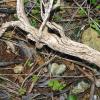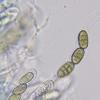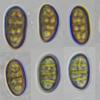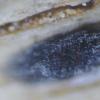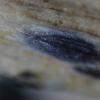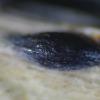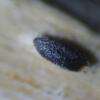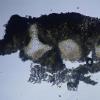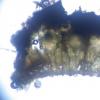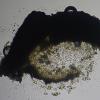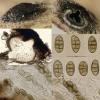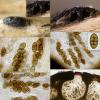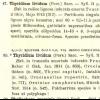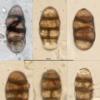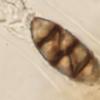
30-11-2025 12:53
 Edvin Johannesen
Edvin Johannesen
White short-stipitate apothecia found on thin twig

30-11-2025 10:47
 William Slosse
William Slosse
I recently found a collection of small Peziza sp.

27-11-2025 12:01
Thomas Læssøehttps://svampe.databasen.org/observations/10496727

27-11-2025 11:46
Thomas Læssøehttps://svampe.databasen.org/observations/10493918

17-09-2025 10:50
Heather MerryleesHi there!I am hoping for any advice on the identif

29-11-2025 08:40
 Andreas Millinger
Andreas Millinger
Hello,on a splintered part of a branch on the grou

28-11-2025 16:45
Nogueira HéctorNovember 23, 2025 Requejo de Sanabria (León) SPAI

25-11-2025 14:24
Thomas Læssøehttps://svampe.databasen.org/observations/10490522

27-11-2025 15:41
Thomas LæssøeSpores brownish, typically 4-celled; 26.8 x 2.4;

27-11-2025 11:31
Thomas LæssøeCollectors notes: Immersed ascomata, erumpent thro
Hysterothecia 1-3mm in length, widely spread, with longitudinal slit.
Asci 8 spored, IKI-ve
Paraphyses simple, unbranched
Spores pigmented, with 3 septa and 1 or more vertical septa
16.8 × 8.8 µm; Q = 1.9
The specimen is a Hysterobrevium and I suspect it is H. mori, but this is a new area for me. Any comments appreciated.

Les périthèques semblent être immmergés... Pourrait-on avoir une coupe verticale de la chose ? Et un zoom sur l'ostiole ?
Dans tous les cas, ce ne sont pas les spores de H. mori.
Yannick
Hi Carmel,
Definitively not an Hysteriaceae.
Perhaps you should look towards such species : http://www.ascofrance.fr/search_recolte/3665
Probably not a "true" Chaetoplea, but perhaps an idea for you.
Alain
PS : Does Rhamnus alpina occurs in Olea's area ?
It does look similar to a Chaetoplea as indicated in the link. Unfortunately Rhamnus alpina does not occur in Malta. There are two other Rhamnus sp. (according to Stephen Mifsud's website) R. alaternus & R. oleioides. The area where I found this collection there were a number of thyme plants (Thymbra capitata) and I suspect that it may be a decorticated twig from this plant.
Within the Leptosphaeriaceae the only reported species (in Malta) belong to Leptosphaeria and a Neosetophoma but the spores are different here, so this is a new record for the islands whatever it is.
Other possibilities, I think, other than Chaetoplea are Curreya (if still valid) and Cucurbitaria but I have no literature on any of these genera.
I will open another thread to request the 1990 paper by Barr for dictyosporous genera in Pleosporalis (though it is for N. America) maybe it could be of some help.
Thanks for your feedback.
I had forgotten about the sample I sent to you. There are a number of common species between Cyprus and Malta, quite interesting.
I will contact Julia Checa and keep you updated on any progress.

The habit and colour of the substrate is most probably Thymus capitatus , while I can safely exldue Rhamnus spp. In fact, I have seen something similar also on thyme in the island of Gozo, but which I have not collected. If I encounter something similar I will collect and update you.
Just to conclude this topic.
I have received an email from Julia Checa and she is of the opinion (from the photos) that the specimen looks like Dyrithium lividum (Pers.) M.E. Barr.
This species has been reported by Saccardo (as Thyridium lividum) in 1914 (no.47) and 1915 (no 95) and in fact in the latter entry one collection is from Thymus capitatus. It seems to be common as indicated in the last line of 95.
Thank to all for your input.

I have recently examined a collection of Dyrithium lividum, this looks quite different. I am adding two photos of the spores of this species, and I am sorry that the recolt was in a very poor condition. You can compare with Enrique Rubio's collection right here on ascofrance:
http://www.ascofrance.com/search_forum/28080
http://www.ascofrance.com/search_forum/18537
Your species is something else, probably belonging to Thyridiaceae (similar to Mattirolia).
regards,
Björn

If anyone wants to examine them, I can send some samples. I'll report the micro features soon, when time allows.

http://www.ascofrance.fr/forum/47068/thyridiaceae-with-an-oval-stroma
I think they are the same species but better not assume anything at this stage.
By the way, what families are closely related to Thyridiaceae that might be considered?
Many Thanks
